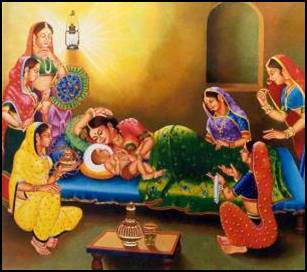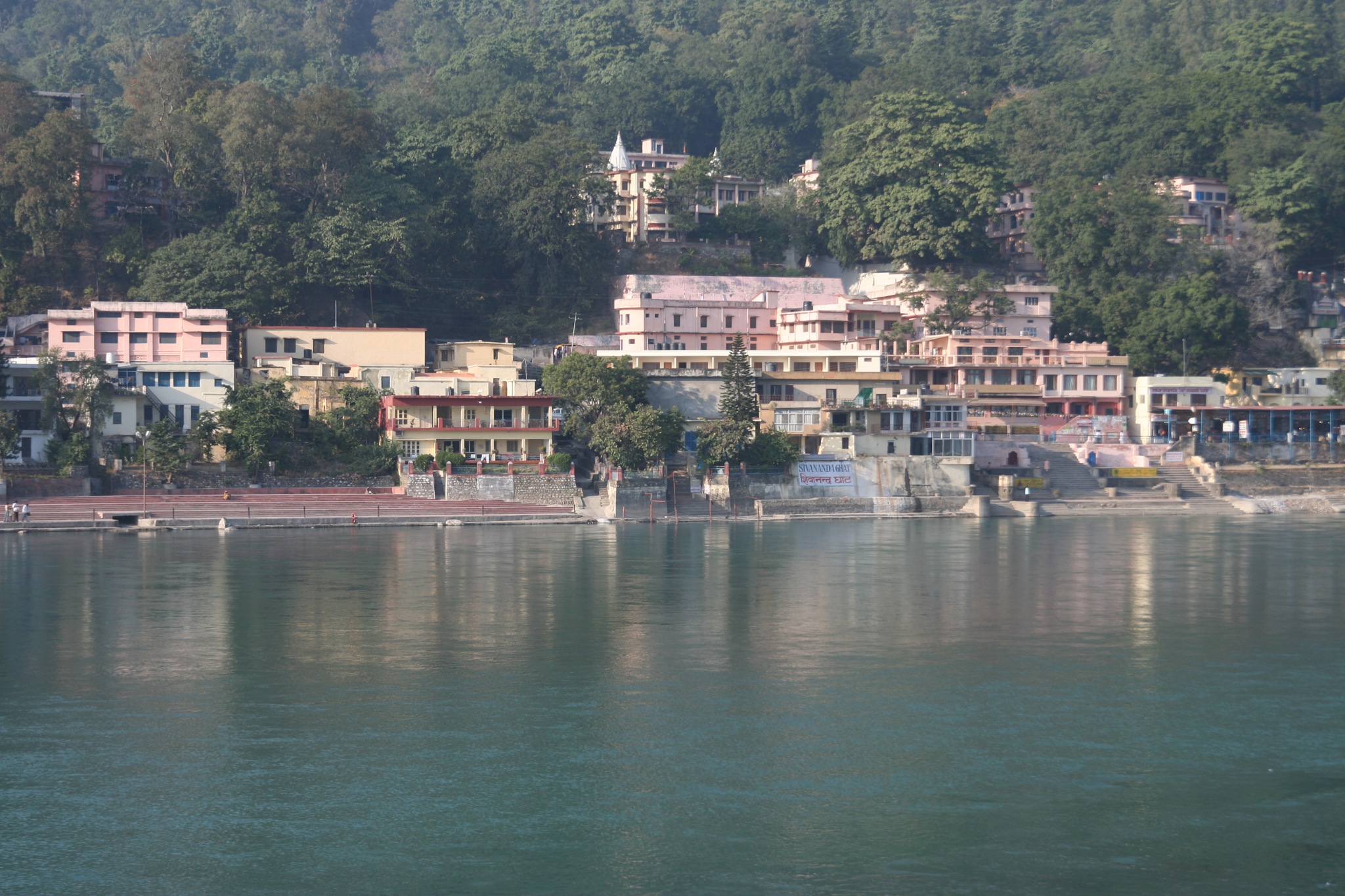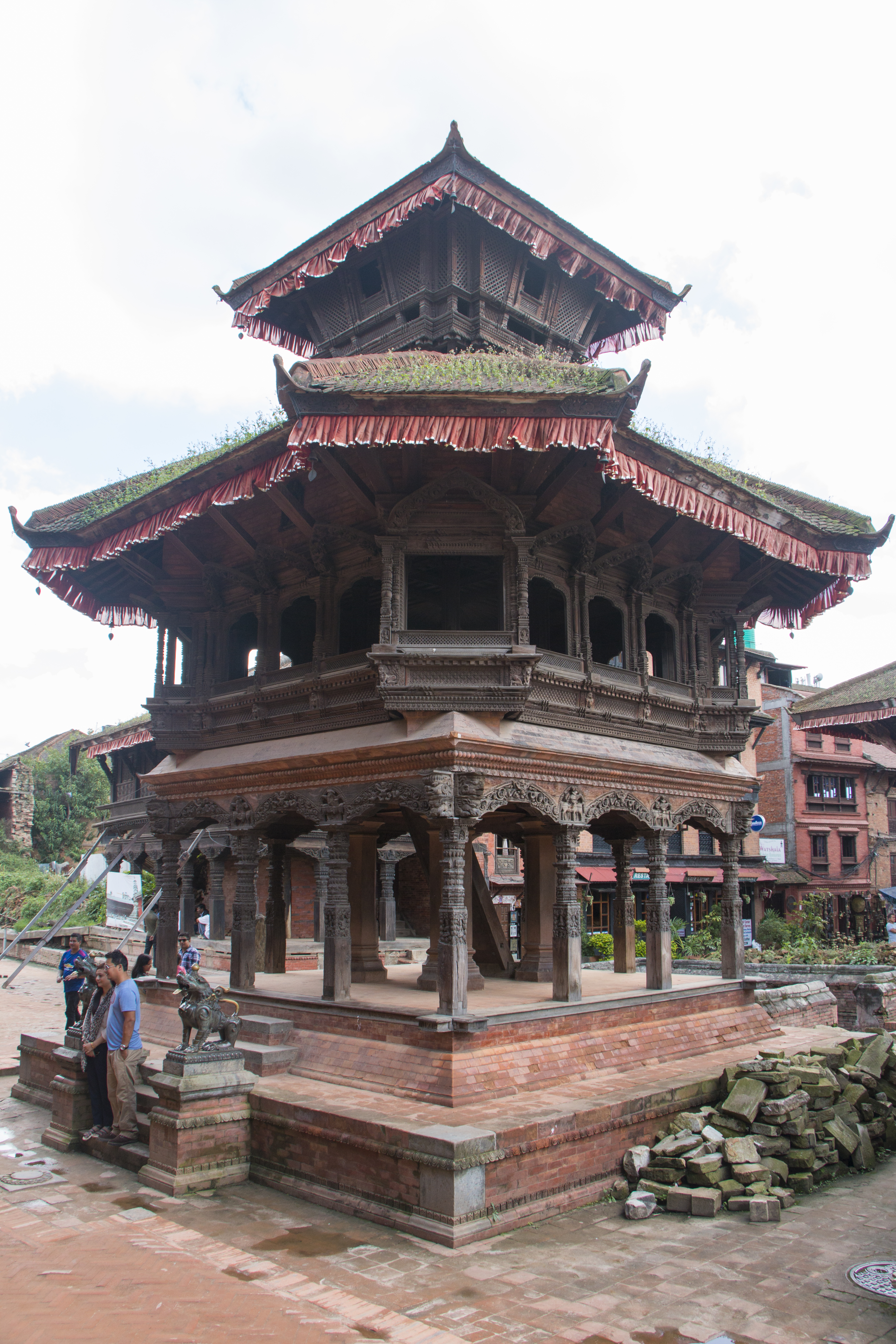|
Kadia Kshatriyas
Gurjar Kshatriya Kadia, also known as Gurjar Kadia/ Gujjar Kadia, and Kadia Kshatriya are a Hindu community mostly in Gujarat and Maharashtra. They are artisan community, occupation is masonry work and are related to larger artisan group of Kadias. Distribution They are found in Saurashtra region of Gujarat specifically in the districts of Junagadh, Vadodara, Surat, Amreli and Jamnagar. They are said to have founded thirty six villages in the Halar Region of Jamnagar district. Outside, Gujarat, community members live mainly in Maharashtra in cities of Mumbai, Pune, Nagpur. The community members also live in Dhanbad, Jharia and Kolkata. Further, the migrant population is found in East Africa Religion and customs The community follows Hindu rituals and Hindu gods and goddess. They worship Lord Swaminarayan, Lord Krishna, Lord Rama, Vishwakarma, the Hindu presiding deity of all craftsmen and architects and their Kuladevata and Shurapuras. The community members attend the Shivarat ... [...More Info...] [...Related Items...] OR: [Wikipedia] [Google] [Baidu] |
Hindu
Hindus (; ) are people who religiously adhere to Hinduism.Jeffery D. Long (2007), A Vision for Hinduism, IB Tauris, , pages 35–37 Historically, the term has also been used as a geographical, cultural, and later religious identifier for people living in the Indian subcontinent. The term ''"Hindu"'' traces back to Old Persian which derived these names from the Sanskrit name ''Sindhu'' (सिन्धु ), referring to the river Indus. The Greek cognates of the same terms are "''Indus''" (for the river) and "''India''" (for the land of the river). The term "''Hindu''" also implied a geographic, ethnic or cultural identifier for people living in the Indian subcontinent around or beyond the Sindhu (Indus) River. By the 16th century CE, the term began to refer to residents of the subcontinent who were not Turkic or Muslims. Hindoo is an archaic spelling variant, whose use today is considered derogatory. The historical development of Hindu self-identity within the local In ... [...More Info...] [...Related Items...] OR: [Wikipedia] [Google] [Baidu] |
Lord Swaminarayan
Swaminarayan ( IAST: ', 3 April 1781 – 1 June 1830), also known as Sahajanand Swami, was a yogi and ascetic, who is believed by followers to be a manifestation of God Krishna, or as the highest manifestation of Purushottam, and around whom the Swaminarayan Sampradaya developed. In 1800, he was initiated into the ''Uddhav'' ''sampradaya'' by his guru, Swami Ramanand, and was given the name Sahajanand Swami. Despite opposition, in 1802 Ramanand handed over the leadership of the Uddhav Sampraday to him before his death. According to the Swaminarayan-tradition, Sahajanand Swami became known as Swaminarayan, and the Uddhav Sampraday as the Swaminarayan Sampradaya, after a gathering in which he taught the Swaminarayan Mantra to his followers. He emphasized "moral, personal, and social betterment," and '' ahimsa'', and is also remembered within the sect for undertaking reforms for women and the poor, and performing non-violent yajñas (fire sacrifices) on a large scale. ... [...More Info...] [...Related Items...] OR: [Wikipedia] [Google] [Baidu] |
Asaram Bapu
Asumal Sirumalani Harpalani (born 17 April 1941), known by devotees as Asaram Bapu, is an Indian religious leader and convicted rapist, who started to come into the limelight in the early 1970s. By 2013, he was estimated to have established over 400 ashrams and 40 schools in India and abroad. Multiple legal proceedings have been initiated against him, in connection with illegal encroachment, rape, and tampering of a witness. In 2018, Asaram was found guilty of the rape of an underage girl by Special Judge Madhusudhan Sharma of a special Scheduled Caste/Scheduled Tribe court in Jodhpur and is currently serving life imprisonment in Jodhpur. In December 2017, Asaram was declared as a ''fake baba'' by Akhil Bharatiya Akhara Parishad, the apex organisation of Hindu Sants (saints) and Sadhus (ascetics) in India. Early life Asaram was born on 17 April 1941, in the Berani village of the Nawabshah District in British India (present-day Berani Town is located in Jam Nawaz Ali T ... [...More Info...] [...Related Items...] OR: [Wikipedia] [Google] [Baidu] |
Ashram
An ashram ( sa, आश्रम, ) is a spiritual hermitage or a monastery A monastery is a building or complex of buildings comprising the domestic quarters and workplaces of monastics, monks or nuns, whether living in communities or alone (hermits). A monastery generally includes a place reserved for prayer which ... in Indian religions. Etymology The Sanskrit noun is a thematic nominal derivative from the root 'toil' (< Proto-Indo-European, PIE *''ḱremh2'') with the prefix 'towards.' An ashram is a place where one strives towards a goal in a disciplined manner. Such a goal could be ascetic, spirituality, spiritual, yogic or any other. Overview  An ashram wo ...
An ashram wo ...
[...More Info...] [...Related Items...] OR: [Wikipedia] [Google] [Baidu] |
Vasant Panchami
Vasant Panchami, also called Saraswati Puja in honor of the Hindu goddess Saraswati, is a festival that marks the preparation for the arrival of spring. The festival is celebrated in Indian religions in different ways depending on the region. Vasant Panchami also marks the start of preparation for Holika and Holi, which take place forty days later. The Vasant Utsava (festival) on Panchami is celebrated forty days before spring, because any season's transition period is 40 days, and after that, the season comes into full bloom. Nomenclature and date Vasant Panchami is celebrated every year on the fifth day of the bright half of the Hindu lunisolar calendar month of Magha, which typically falls in late January or February. Spring is known as the "King of all Seasons", so the festival commences forty days in advance. It is generally winter-like in northern India, and more spring-like in central and western parts of India on Vasant Panchami, which gives credence to the idea tha ... [...More Info...] [...Related Items...] OR: [Wikipedia] [Google] [Baidu] |
Exogamy
Exogamy is the social norm of marrying outside one's social group. The group defines the scope and extent of exogamy, and the rules and enforcement mechanisms that ensure its continuity. One form of exogamy is dual exogamy, in which two groups continually intermarry with each other. In social science, exogamy is viewed as a combination of two related aspects: biological and cultural. Biological exogamy is marriage of nonblood-related beings, regulated by forms of incest law. Cultural exogamy is marrying outside a specific cultural group; the opposite being endogamy, marriage within a social group. Biology of exogamy Exogamy often results in two individuals that are not closely genetically related marrying each other; that is, outbreeding as opposed to inbreeding. In moderation, this benefits the offspring as it reduces the risk of the offspring inheriting two copies of a defective gene. Increasing the genetic diversity of the offspring improves the chances of offspring reprod ... [...More Info...] [...Related Items...] OR: [Wikipedia] [Google] [Baidu] |
Endogamy
Endogamy is the practice of marrying within a specific social group, religious denomination, caste, or ethnic group, rejecting those from others as unsuitable for marriage or other close personal relationships. Endogamy is common in many cultures and ethnic groups. Several religious and ethnic religious groups are traditionally more endogamous, although sometimes with the added dimension of requiring marital religious conversion. This permits an exogamous marriage, as the convert, by accepting the partner's religion, becomes accepted within the endogamous rules. Endogamy, as distinct from consanguinity, may result in transmission of genetic disorders, the so-called founder effect, within the relatively closed community. Adherence Endogamy can serve as a form of self-segregation; a community can use it to resist integrating and completely merging with surrounding populations. Minorities can use it to stay ethnically homogeneous over a long time as distinct communities withi ... [...More Info...] [...Related Items...] OR: [Wikipedia] [Google] [Baidu] |
Dharamshalas
A dharamshala, also written as dharmashala is a public resthouse or shelter in the Indian subcontinent. Just as sarai are for travellers and caravans, dharamshalas are built for religious travellers at pilgrimage sites. In Nepal there are dharamshalas especially built for pilgrims as well as dharamshalas for locals. Etymology ''Dharamshala'' (Devanagari: धर्मशाला; ITRANS: Dharmashaalaa; IAST: Dharmaśālā) is a word (derived from Sanskrit) that is a compound of ''dharma'' (धर्म) and ''shālā'' (शाला). A loose translation into English would be 'spiritual dwelling' or, more loosely, 'sanctuary'. Rendering a precise literal translation into English is problematic due to the vast and conceptually rich semantic field of the word ''dharma'', and the cultural aspect of India. In common Hindu usage, the word ''dharamshala'' refers to a shelter or rest house for spiritual pilgrims. Traditionally, such ''dharamshalas'' (pilgrims' rest houses) were common ... [...More Info...] [...Related Items...] OR: [Wikipedia] [Google] [Baidu] |
Girnar
Girnar is an ancient hill in Junagadh, Gujarat, India. Geology Mount Girnar is a major igneous plutonic complex which intruded into the basalts towards the close of the Deccan Trap period. The rock types identified in this complex are gabbros (tholeiitic and alkalic), diorites, lamprophyres, alkali-syenites and rhyolites. The parent gabbroic magma is shown to have given rise in sequence to diorites, lamprophyres and alkali-syenites. The rhyolite, though earlier considered a product of differentiation, is now believed to be an independent magma without any genetic link with the gabbro and its variants. History Fourteen of Ashoka's Major Rock Edicts, dating to circa 250 BCE, are inscribed on a large boulder that is housed in a small building located outside the town of Junagadh on Saurashtra peninsula in the state of Gujarat, India. It is located on Girnar Taleti road, at about 2 km (1.2 mi) far from Uperkot Fort easterly, some 2 km before Girnar Taleti. ... [...More Info...] [...Related Items...] OR: [Wikipedia] [Google] [Baidu] |
Shivaratri
Maha Shivaratri ( IAST: Mahāśivarātri) is a Hindu festival celebrated annually in honour of the god Shiva. The name also refers to the night when Shiva performs the heavenly dance called Tandava. In every month of the luni-solar Hindu calendar, there is a ''Shivaratri'' – "night of Shiva" – on the day before new moon. But once a year, in late winter and before the arrival of Summer (February/March), this night is called "Maha Shivaratri" – "the Great Night of Shiva". This day falls in the month of Phalguna as per the North Indian Hindu calendar and in Magha as per the South Indian Hindu calendar (see Amanta and Purnimanta systems). It is a notable festival in Hinduism, and this festival is solemn and marks a remembrance of "overcoming darkness and ignorance" in life and the world. It is observed by remembering Shiva and chanting prayers, fasting, and meditating on ethics and virtues such as honesty, non-injury to others, charity, forgiveness, and the discovery of ... [...More Info...] [...Related Items...] OR: [Wikipedia] [Google] [Baidu] |
Shurapura
A hero stone (Vīragallu in Kannada, Naṭukal in Tamil) is a memorial commemorating the honorable death of a hero in battle. Erected between the second half of the first millennium BC and the 18th century AD, hero stones are found all over India. They often carry inscriptions and a variety of ornaments, including bas relief panels, frieze, and figures in carved stone. Usually they are in the form of a stone monument and may have an inscription at the bottom with a narrative of the battle. The earliest and oldest of such memorial Hero stones is found in the Indian state of Tamil Nadu is more than 2400 years old that is 4th Century BC. According to the historian Upinder Singh, the largest concentration of such memorial stones is found in the Indian state of Karnataka. About two thousand six hundred and fifty hero stones, the earliest in Karnataka is dated to the 5th century AD.Chapter "Memorializing death in stone", Singh (2009), p48 The custom of erecting memorial stones dates back ... [...More Info...] [...Related Items...] OR: [Wikipedia] [Google] [Baidu] |
Kuladevata
A kuladevatā (), also known as a kuladaivaṃ, is an ancestral tutelary deity in Hinduism and Jainism. Such a deity is often the object of one's devotion (''bhakti''), and is coaxed to watch over one's clan (''kula''), gotra, family, and children from misfortune. This is distinct from an '' ishta-devata'' (personal tutelar) and a grāmadevatā (village deities). Male kuladevatas are sometimes referred to as a kuladeva, while their female counterparts are called a kuladevi. Etymology The word ''kuladevata'' is derived from two words: ''kula'', meaning clan, and ''devata'', meaning deity, referring to the ancestral deities that are worshipped by particular clans. Veneration The deity can be represented in a male or a female human, an animal, or even an object, like a holy stone. It is believed that rituals done at a kuladeva/kuladevi temple benefits all those genetically connected with the one performing the ritual. Kuladaivams of the Shaiva tradition are often considere ... [...More Info...] [...Related Items...] OR: [Wikipedia] [Google] [Baidu] |
.jpg)


_(8638392628).jpg)


.jpg)
